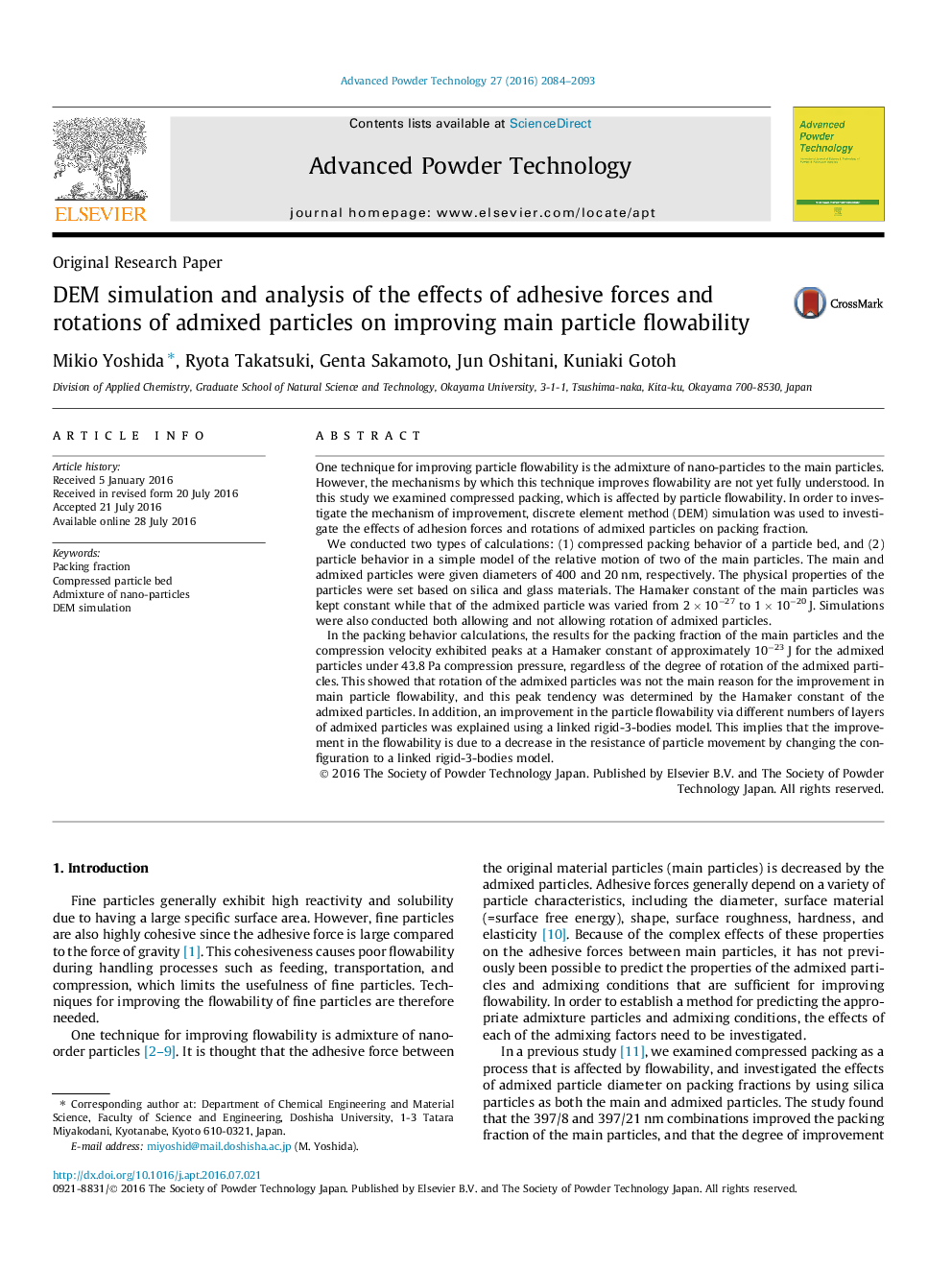| کد مقاله | کد نشریه | سال انتشار | مقاله انگلیسی | نسخه تمام متن |
|---|---|---|---|---|
| 6464739 | 1362211 | 2016 | 10 صفحه PDF | دانلود رایگان |

- Improvement in particle flowability depended on the adhesive force of the APs.
- The rotation of the APs was not the main reason for the improvements in flowability.
- A linked rigid-3-bodies model can explain the improvement in flowability.
One technique for improving particle flowability is the admixture of nano-particles to the main particles. However, the mechanisms by which this technique improves flowability are not yet fully understood. In this study we examined compressed packing, which is affected by particle flowability. In order to investigate the mechanism of improvement, discrete element method (DEM) simulation was used to investigate the effects of adhesion forces and rotations of admixed particles on packing fraction.We conducted two types of calculations: (1) compressed packing behavior of a particle bed, and (2) particle behavior in a simple model of the relative motion of two of the main particles. The main and admixed particles were given diameters of 400 and 20Â nm, respectively. The physical properties of the particles were set based on silica and glass materials. The Hamaker constant of the main particles was kept constant while that of the admixed particle was varied from 2Â ÃÂ 10â27 to 1Â ÃÂ 10â20Â J. Simulations were also conducted both allowing and not allowing rotation of admixed particles.In the packing behavior calculations, the results for the packing fraction of the main particles and the compression velocity exhibited peaks at a Hamaker constant of approximately 10â23Â J for the admixed particles under 43.8Â Pa compression pressure, regardless of the degree of rotation of the admixed particles. This showed that rotation of the admixed particles was not the main reason for the improvement in main particle flowability, and this peak tendency was determined by the Hamaker constant of the admixed particles. In addition, an improvement in the particle flowability via different numbers of layers of admixed particles was explained using a linked rigid-3-bodies model. This implies that the improvement in the flowability is due to a decrease in the resistance of particle movement by changing the configuration to a linked rigid-3-bodies model.
Graphical AbstractSchematic view of different mechanical models under conditions with and without admixed particles ((a) Linked rigid-3-bodies model (=condition with AP), (b) Linked rigid-2-bodies model (=condition without AP)).81
Journal: Advanced Powder Technology - Volume 27, Issue 5, September 2016, Pages 2084-2093